I want to plot the distribution of the datasets using the histogram in R. I tried using different arguments (default, Freedman-Diaconis, and Scott) to get the best representation. I consider using a log scale later, but first I want to know the raw distribution without any scaling. However, the results look different, why is that? The dataset I use can be downloaded from here data or here data. The code I'm running are
hist(as.matrix(deviation_all_genes_all_spots), xlim = c(-(1*10^(4)), 10^(4.5)), breaks = 200)
hist(as.matrix(deviation_all_genes_all_spots), xlim = c(-(1*10^(4)), 10^(4.5)), breaks = "Scott")
hist(as.matrix(deviation_all_genes_all_spots), xlim = c(-(1*10^(4)), 10^(4.5)), breaks="Freedman-Diaconis")
Please help. Thank you very much.


